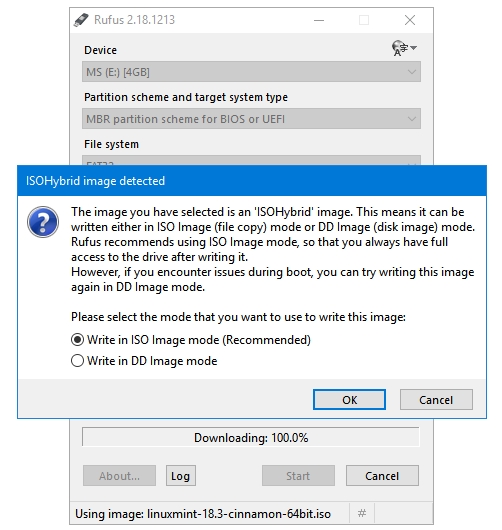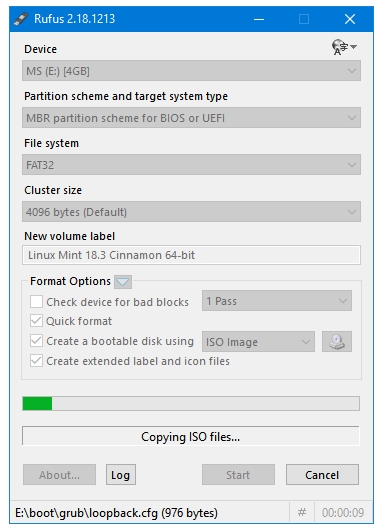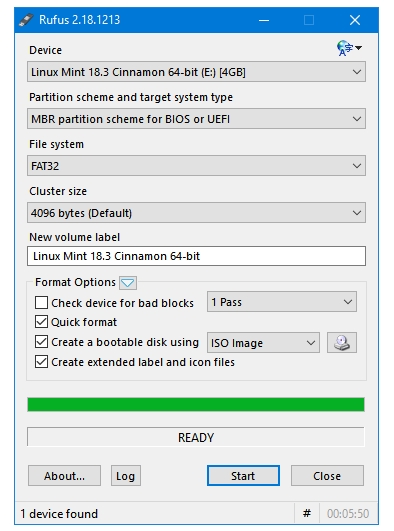Rufus
Rufus is a small portable tool that lets you create all kinds of bootable USB flash drives from ISO files such as Antivirus Rescue Disks, Partitioning Disks, Linux Distro Live USBs, and many other bootable rescue and recovery tools. What makes it great is the speed at which it works. You get all the essential features along with the great speed of Rufus.
Homepage: https://rufus.akeo.ie/
How to Create a Bootable Linux Mint Live USB with Rufus in Windows
Step 1: Open Rufus.
- Select the USB drive that you want to use from the Device drop-down menu.
- Under Partition scheme and target system type, select MBR partition scheme for BIOS or UEFI. The USB created will work with both type of systems – older BIOS, and newer UEFI.
- Under the File system selection setting, select FAT32.
- Keep the Cluster size value to its default setting, which is 4096 bytes (Default).
- The New volume label field changes automatically during the bootable disk creation process.
- Under Format Options, tick the check-boxes for Quick format, Create a bootable disk using FreeDOS, and Create extended label and icon files.

Step 2: Under Format Options, click on the button with the disk icon. It will open the Open file explorer window. Browse for the image (ISO) file that you want to use, which is linuxmint-18.3-cinnamon-64bit.iso in this case, and then click Open.

Step 3: You’ll notice that the Volume label automatically changes depending upon the ISO file. Click the Start button to start the process.

Step 4: Rufus may ask you to download updates or some important required files. Click Yes to continue.

Step 5: Again, select the Recommended option, and then click the OK button.

Step 6: All data on the device will be deleted if you continue with the process, so make sure that you have selected the right USB drive. Click OK to process further.

Step 7: Rufus starts copying and installing files on the USB drive.

Step 8: It’ll take around 5 minutes to complete the process. READY will be displayed in the Rufus Status bar. Click the Close button to close the program, and remove the USB drive.

Your bootable Linux Mint is now ready.
Related Posts:
- How to Create a Bootable Linux USB Drive with UNetbootin in Windows?
- How to Create a Bootable Linux USB Drive with UUI – Universal USB Installer in Windows?
- How To Install Multiple Bootable Operating Systems on One USB Drive with YUMI – Your Universal Multiboot Installer?
- How to Create a Bootable Windows 10 USB Flash Drive using Media Creation Tool?
- How to Create a Bootable Windows 10 USB Drive using ISO file?